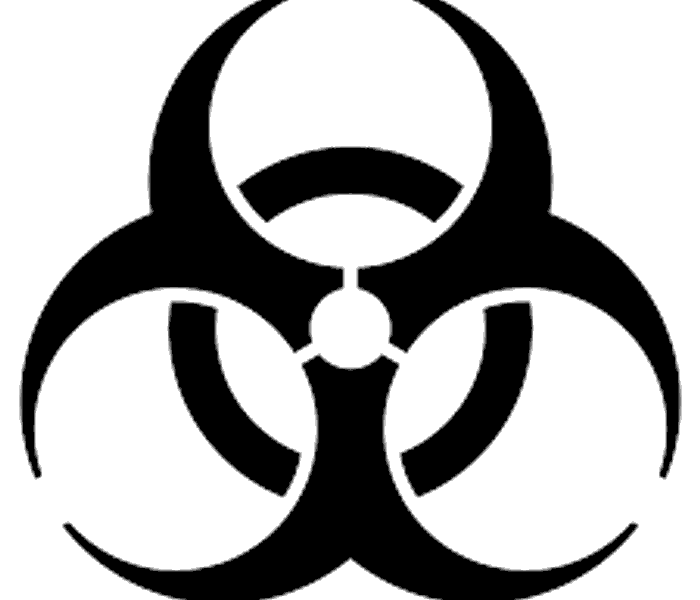Biosafety Levels and Their Meaning
5/2/2022 (Permalink)
Biosafety level 1 (BSL-1)
BSL-1 is the lowest security level for handling biological material. This kind of material poses no or only a low risk to healthy adult humans and presents minimal potential hazard to laboratory personnel and the environment. BSL-1 laboratories do not have to be separated from the rest of a building. Laboratory workers can do their work on open bench tops, and there is no need to use special equipment. Standard microbiology practices usually suffice to protect laboratory workers and other employees in the building. This means, for example, that no mouth pipetting is allowed and splashes and aerosol formation should be avoided. Spills have to be cleaned up immediately and all work surfaces should be decontaminated each time work is finished. Eating, drinking, and smoking are not allowed in the lab. To protect themselves, workers generally wear eye protection, gloves, and a lab coat. It is recommended that access to the laboratory be limited. In general, an autoclave is only required when working with genetically modified organisms or modified genetic elements (e.g., plasmid vectors). Biohazard signs are posted whenever infectious agents are present.
Examples of typical BSL-1 biological material
- Bacteria: Agrobacterium tumefaciens,Escherichia coli K-12, Pseudomonas fluoresces, Bacillus subtilis
- Viruses: canine adenovirus types 1 and 2, Bovine enterovirus
- Fungi: Saccharomyces cerevisiae
- Certain cell cultures> Endoparasites of animals and humans (e.g., some nematodes)
Biosafety level 2 (BSL-2)
All activities in a BSL-2 laboratory require higher security standards than in a BSL-1 laboratory. The biological material used in a BSL-2 laboratory consists of bacteria, viruses, and organisms associated with human diseases. The potential pathogenic or infectious organisms subject to BSL-2 standards pose a moderate hazard to healthy adult humans. However, because of their potential to cause human disease, great care must be taken to prevent percutaneous injury, and employees are subject to regular medical surveillance if necessary. The main difference in the work procedures followed in a BSL-1 laboratory and a BSL-2 laboratory is that employees in a BSL-2 laboratory will use a BSC as a primary barrier for potentially hazardous aerosols. These aerosols are generally formed during standard work procedures like mixing, pipetting, and centrifuging, so these activities should be carried out under a BSC. At a minimum, an autoclave has to be present in the lab as a second barrier. Windows open to the outside are not recommended. A sink for washing hands must be placed in direct proximity to the exit door. The laboratory should be easy to clean and decontaminate. Inside the laboratory, special lab coats, gloves, and face and eye protection should be worn. Special precaution must be taken with sharps that can cause injury. Access to BSL-2 laboratories must be restricted.
Examples of typical BSL-2 biological material
- Bacteria: Chlamydia pneumoniae, Enterobacter spp.,Mycoplasma pneumonia, Yersinia pseudotuberculosis
- Viruses: Herpes simplex virus, HIV (when performing routine diagnostic procedures or working with clinical specimens)
Biosafety level 3 (BSL-3)
BSL-3 involves handling indigenous or exotic agents that may cause serious or potentially lethal diseases through inhalation and/or pose a serious threat to the environment. Compared with the BSL-2 lab, BSL-3 labs require additional security precautions: Only limited access to the laboratory is allowed. Moreover, laboratory personnel remain under medical surveillance and are offered appropriate immunizations for the agents handled or potentially present in the laboratory. All laboratory waste has to be disinfected, and the clothes worn in the lab must be decontaminated before laundering. Walls, ceilings, and windows must be sealed, and floors must be nonskid and resistant to chemicals. The design, operational parameters, and procedures of a BSL-3 facility must be verified and documented prior to the start of operations. Facilities must be documented and verified again a minimum of once a year. In terms of a primary barrier, all open manipulations of biological material must be done under a BSC (preferably Class II or Class III) or in a closed containment system, and special protective clothing must be worn. BSL-3 laboratories must have separate exits with self-closing doors as the second barrier. Moreover, an air-ventilation system providing negative air flow is required that does not recirculate exhaust.
Examples of typical BSL-3 biological material
- Bacteria: Yersinia pestis, Brucella abortus, Chlamydia psittaci, Pseudomonas mallei
- Viruses: West Nile fever, herpes B, hepatitis A
Biosafety level 4 (BSL-4)
BSL-4 entails handling very dangerous and exotic biological material that may cause infection inside the laboratory as the result of aerosols. Other agents can have a very similar antigenic relationship to existing BSL-4 material, but there is insufficient data available to designate the level for these agents. Biological material also handled at this level relates to existing infectious material where the disease transmission is unknown. In addition to the precautions taken at the BSL-3 level, BSL-4 requires additional protection: All clothes must be changed before entering the lab, and employees must shower before leaving. In terms of primary barriers, all work has to be carried out in a Class III BSC or in a Class I or II BSC in combination with the lab worker wearing a full body, air-supplied positive pressure suit. A BSL-4 laboratory is usually located in a separate building or in a specific insolated area of a building; this isolation serves as a second barrier. This level also requires dedicated supply and exhaust ventilation equipment with vacuum and decontamination systems. Depending on the material and requirements, special installation might also be necessary.
Examples of typical BSL-4 biological material
- Ebola-Virus, Lassa-Virus, Marburg-Virus





 24/7 Emergency Service
24/7 Emergency Service
